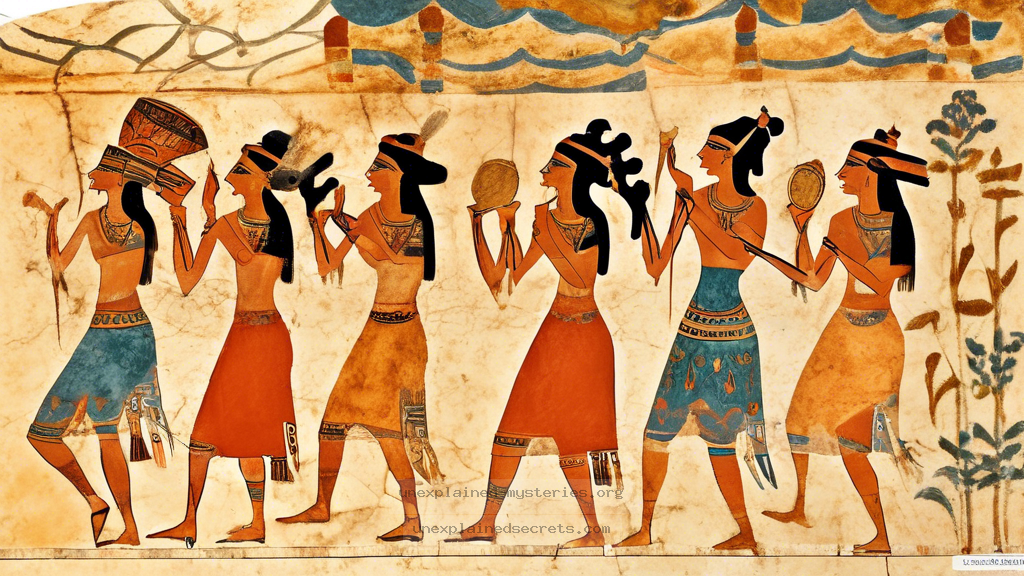What Happened to the Minoan Civilization and Why Do Their Advanced Achievements Remain Mysterious?
What Happened to the Minoan Civilization and Why Do Their Advanced Achievements Remain Mysterious?
The Minoan civilization, flourishing on the island of Crete from approximately 2600 to 1100 BCE, is often celebrated as one of the earliest advanced societies in Europe. Despite their sophisticated achievements in art, architecture, and trade, the reasons for their decline remain shrouded in mystery. This question is particularly compelling because unraveling the fate of the Minoans could shed light on the vulnerabilities of advanced societies, and perhaps offer lessons for modern civilizations. Let’s delve into the layers of this enigmatic culture, exploring their advancements, potential downfalls, and the ongoing intrigue surrounding their legacy.
Historical Context of the Minoan Civilization
The Minoan civilization is named after King Minos, a figure from Greek mythology, who was said to have ruled over a powerful sea empire. The Minoans are credited with developing one of the first complex societies in Europe, marked by advanced architecture exemplified in their palaces such as Knossos. These palatial structures featured intricate frescoes, advanced plumbing systems, and large storage facilities that suggest a highly organized economy. The Minoans were also skilled artisans, producing pottery, jewelry, and textiles that were traded extensively across the Mediterranean.
By the time of their peak around 1700 BCE, the Minoans had established a robust maritime trade network, connecting them to other ancient cultures such as the Egyptians and Mesopotamians. This extensive trade likely contributed to their wealth, but it also positioned them as a target for potential conflict.
Key Achievements of the Minoans:
- Advanced architectural designs, including multi-story buildings.
- Complex plumbing systems with running water.
- Rich artistic traditions seen in frescoes and pottery.
- Extensive trade networks across the Mediterranean.
Core Concepts: Theories Behind Their Decline
Several theories have emerged regarding the decline of the Minoan civilization, each providing insights into the vulnerabilities of their society. The most prevalent theories include natural disasters, invasion, and economic decline.
Natural Disasters
One significant theory suggests that volcanic activity played a critical role in the Minoans’ downfall. The eruption of the Santorini volcano around 1600 BCE is believed to have had devastating effects on the Minoan economy and society. Ash from the eruption could have disrupted agriculture, while tsunamis may have destroyed coastal settlements. Archaeological evidence supports the idea that the Minoans experienced significant upheaval following this event.
Invasion by Mycenaeans
Another theory posits that the Minoans were invaded by the Mycenaeans, a warrior culture from mainland Greece, around 1450 BCE. The Mycenaeans are known to have adopted aspects of Minoan culture, including their art and writing system, suggesting a possible takeover. Some archaeological findings show evidence of destruction in Minoan sites, indicating violent confrontations.
Economic Decline
Additionally, some scholars argue that economic decline, possibly exacerbated by external pressures or natural disasters, led to a gradual decrease in the Minoan population. This decline could have resulted in less trade, diminished agricultural output, and a weakening of social and political structures, making them more susceptible to outside threats.
Comparative Analysis of Decline Theories:
| Theory | Evidence | Implications |
|---|---|---|
| Natural Disasters | Volcanic eruptions, tsunamis | Highlight vulnerability to environmental changes |
| Invasion | Destruction layers, Mycenaean artifacts | Emphasizes the role of conflict in societal change |
| Economic Decline | Evidence of reduced trade, agricultural output | Shows how internal factors can weaken a civilization |
Practical Evidence and Archaeological Discoveries
Archaeological excavations in Crete have revealed a wealth of information about the Minoan civilization, including their impressive palatial complexes and artifacts. The palace of Knossos, for example, is often cited as a hallmark of Minoan architecture, showcasing grand staircases, elaborate frescoes, and extensive storage facilities. This site also features evidence of advanced engineering practices, such as the use of light wells and sophisticated drainage systems.
Moreover, the discovery of Linear A, the Minoan script that remains undeciphered, adds another layer of intrigue. While Linear B, the script used by Mycenaean Greeks, has been deciphered, Linear A’s meanings and uses remain elusive, leaving scholars to speculate about the Minoans’ administrative and cultural practices.
Alternative Perspectives on Minoan Civilization
While the mainstream theories around the Minoan decline are well-documented, alternative perspectives have emerged that challenge the conventional narrative. Some researchers propose that the Minoan civilization did not experience a sudden collapse but rather transitioned into a new phase of existence, potentially merging with or being absorbed by the Mycenaean culture.
Others argue that the Minoans might have adapted to changing circumstances, shifting their economic focus or altering their social structures rather than facing total annihilation. This perspective encourages a reevaluation of what constitutes a “collapse” and suggests that civilizations can evolve rather than simply disappear.
Common Misconceptions About the Minoans
Many misconceptions surround the Minoan civilization, often stemming from their portrayal in popular culture and mythology. One common myth is that the Minoans were a peaceful society without warfare. While much of their art depicts serene scenes, evidence of fortifications and weaponry suggests that they were not entirely free from conflict.
Another misconception is that the Minoans were solely a maritime culture, ignoring their agricultural practices and the significance of land-based resources. The Minoans were skilled farmers, growing grains, olives, and grapes, which were essential to their economy and trade.
Notable Misconceptions:
- Myth: Minoans were a completely peaceful society.
- Myth: Minoans relied solely on maritime trade.
Best Practices for Investigating Lost Civilizations
For those interested in studying lost civilizations like the Minoans, several best practices can enhance the investigation process. First, it is crucial to approach archaeological evidence critically, recognizing that interpretations can change with new discoveries or technologies.
Engaging with interdisciplinary studies can also provide a more holistic view. Collaborating with experts in geology, anthropology, and history can yield deeper insights into the factors influencing a civilization’s rise and fall. Moreover, staying updated on ongoing excavations and findings through journals and conferences is essential for understanding the evolving narratives surrounding ancient cultures.
Future Developments in Minoan Research
Research into the Minoan civilization is ongoing, with new archaeological discoveries continually reshaping our understanding. Techniques such as ground-penetrating radar and DNA analysis are being employed to uncover previously hidden artifacts and to analyze the genetic lineage of ancient populations.
Furthermore, advancements in digital reconstruction allow researchers to visualize and simulate Minoan life, offering new ways to engage with their history. These developments hold the potential to answer lingering questions about Minoan society and its eventual decline.
Conclusion: Unraveling the Mystery of the Minoans
The fate of the Minoan civilization remains one of history’s most captivating mysteries. While various theories seek to explain their decline, the interplay of natural disasters, invasion, and economic shifts illustrates how complex and multifaceted the demise of a civilization can be. As research continues and new technologies emerge, we may edge closer to understanding the true story of the Minoans, offering insights not only into their civilization but also into the broader patterns of human history.
Ultimately, the Minoans serve as a reminder of the fragility of advanced societies and the importance of learning from the past as we navigate our present and future. 💡
Other Articles
Recent Posts
- What Happened to Flight MH370? The Conspiracy Theories That Still Haunt Us
- What Secrets Lurk Within the Walls of the Infamous Trans-Allegheny Lunatic Asylum?
- What Evidence Supports the Existence of Bigfoot in the Pacific Northwest?
- What Happened to the Indus Valley Civilization? Unraveling the Mysteries of Ancient Urban Life
- Can Telepathy Be Scientifically Proven Through Laboratory Evidence?







